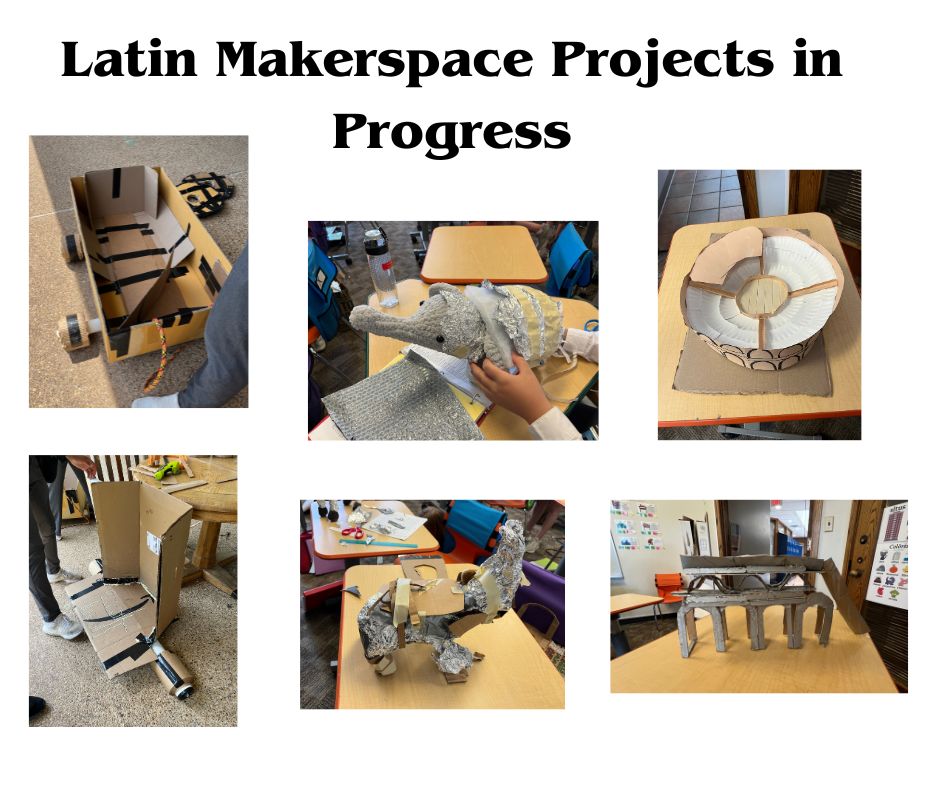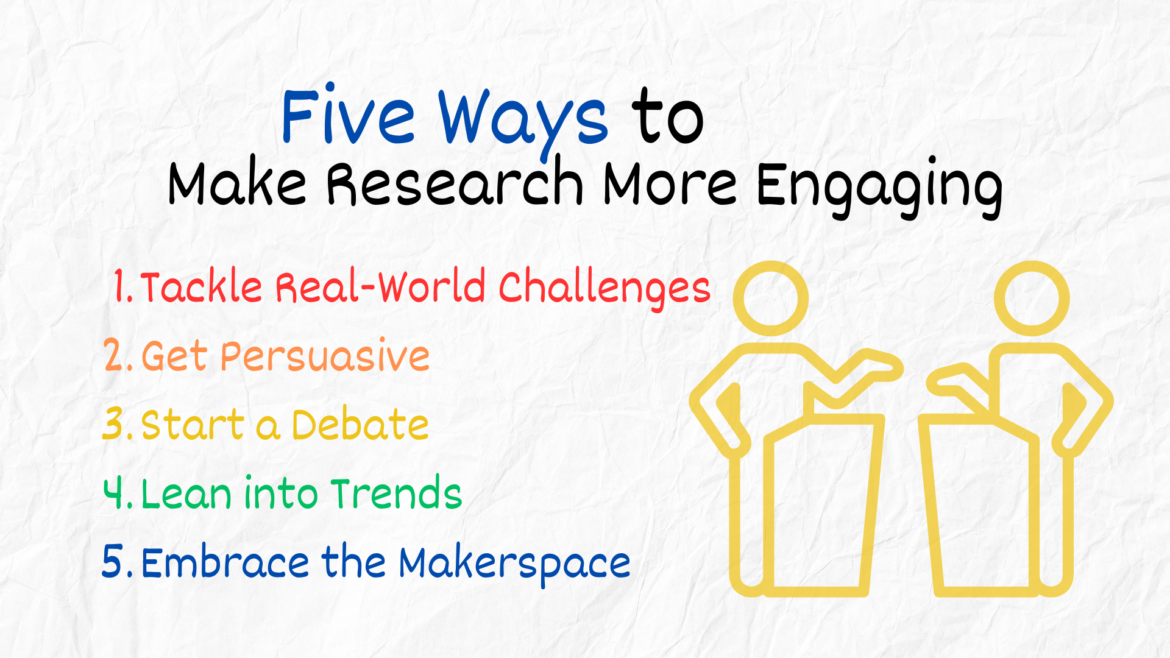When most students (and many teachers) hear the word research, they often cringe — maybe they’ve been frustrated in the past while researching or they see research as an isolated academic task that does little to spark intrinsic motivation. As a school librarian, my goal is to transform research projects into opportunities to spark student creativity and tap into intrinsic interest while still effectively teaching foundational researching skills through collaborations with classroom teachers. Here are five ways to make research more engaging in your classroom!

1. Tackle Real-World Challenges
Research projects that reflect real world tasks encourage students to see research as a valuable life skill. For example, a 7th grade science teacher at my school wanted her students to learn more about radioactive elements. We worked together to create several real world research challenges to engage her students.
Our final prompts included one that asked them to pretend they worked at Chernobyl and to take steps to protect their families when they uncovered information about a potential accident. Another challenge asked students to go back in time and share what we know today about x-rays and their radiation with famed scientist Marie Curie. Both challenges required students to engage in more traditional research before applying critical thinking to complete the challenge.
Resources:

2. Get Persuasive
Another type of real-world research encourages students to view their surroundings critically and suggest improvements in a persuasive way. As a 5th grade Language Arts teacher, I ended the year with a persuasive writing unit and, one year, I had students research effective learning spaces. They explored different types of furniture, decorations, lighting, and even layouts. They even collected and compiled their own research data by creating surveys and conducting interviews. Then, they chose a learning space at our school to evaluate based on their research and suggest changes in the form of a persuasive letter to the person in charge of the space. This encouraged students not only to research thoroughly to back up their claims, but also provided a sense of agency.
Resources:

3. Start a Debate
Another way to make research more engaging is to utilize it as preparation for a debate. For example, I partnered with an 8th grade humanities teacher to craft a list of debate questions that reflected her curriculum as her year end wrap up. We had students work in groups of four to research their assigned question and then split them into pairs, with one pair supporting each side of the debate.
Questions again included real-world applications, including, “Should the US government sponsor and promote pro-war propaganda during times of war?” and “Which invention was more significant, the telephone or the lightbulb?” Students chose topics that reflected their interests and were motivated to research by their competitive nature. These debates also put their research to the test and taught them to select their most effective findings to support their own arguments.
Resources:

4. Lean Into Trends
In my 5th grade Language Arts class, we ended the year by researching the pros and cons of using fidget toys in classes. We explored different types of fidget toys, then interviewed teachers and students about their experiences with them. The unit culminated in students creating their own fidget toy and then writing a persuasive letter to a teacher in the next grade encouraging them to let their students use the toy next year.
Resources:

5. Embrace the Makerspace
Recently, I partnered with our school’s Latin teacher to create makerspace research projects for her 5th-8th grade students. Her 5th graders researched armor and animals found in Ancient Rome before creating armor for a stuffed animal based on their research. Her 6th graders each researched a different merchant from the Ancient Roman forum (marketplace) and then created items to sell in our forum simulation. Her 7th graders chose different structures from Ancient Rome to research and then created models to use in a presentation where they convinced a panel of Ancient Roman government officials to fund their idea. Her 8th graders researched chariots in Ancient Rome and built their own life-sized chariots out of cardboard and PVC pipes to race. These hands-on activities transformed traditional research projects into collaborative, competitive, and creative endeavors.

Makerspace Madness: Making Research More Engaging
What if you could leverage research to encourage creativity? You can! Research-based makerspace projects allow space for research magic to happen. Makerspace projects can take many forms, but the ones I’ve referred to throughout the article are those where students use readily available (and inexpensive) craft supplies and recycled materials to create items based on their imagination and research.
Are you excited about dipping your toe into the wonderful world of makerspace research projects but not sure where to begin? Start small by using building challenges as bell ringers or brain breaks. These challenges help students build their creativity, collaboration, and grit and prepare them to tackle larger projects. Then, take a trip to The Dollar Tree and begin building your stash of maker supplies. My shopping list even includes mock “prices” because I often give my students a budget for projects so they have to be more intentional in planning their creations.

